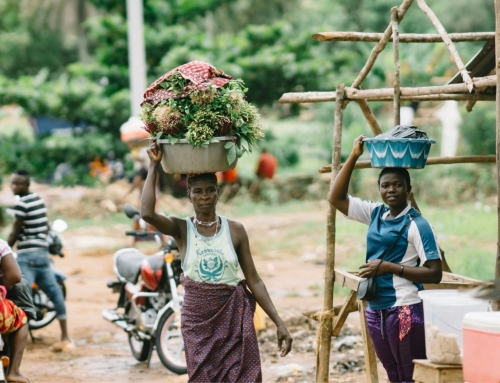This blog is part three of a six-part series on localization. Localization is a power-shifting process, where power is shifted to local actors to address development challenges. Over this series, Social Impact unpacks its own experiences on localization to shed light on our process and provide lessons learned for our funders, peers, and partners. For more on localization at Social Impact, see this page and blogs one and two in the series.
As USAID renews its focus and commitment to localization throughout the Program Cycle, Missions can use their Collaborating, Learning & Adapting (CLA) support contracts to help spur progress on localization goals. Below are two recent examples from Social Impact’s work with USAID Missions as inspiration for other Missions and support contracts to move the localization agenda forward.
Looking back: A Localization Learning Review
In one Mission, Social Impact is supporting a localization learning review to tell the story of the Mission’s experience with localization over the last decade. The scope for this review starts from the presumption that USAID’s primary indicator for localization (the percentage of program funds provided directly to local partners) can never tell the full story. It does not provide insight into what happened along the way, what the challenges or successes were, what in the operating environment enabled or hindered localization, whether localization (in terms of power-shifting to local actors) genuinely took place, and what lessons should be applied to future localization efforts.
The key questions for this review include:
- Have USAID’s localization efforts been successful in shifting power to local actors to set priorities, design, implement, and learn from and adapt programming? (In this case, the review will only look at direct funding to local organizations)
- Why was the Mission successful or unsuccessful? Which of these factors were within the Mission’s control or influence?
- In what ways does USAID need to adapt its approach at the Mission level and global level to enable greater localization?
The review itself will heavily involve local organizations and counterparts in scoping, data collection, making sense of the information, and recommendation-setting. The team will apply a case study method to enable an in-depth review, identify lessons, and facilitate sense-making within the Mission to discuss the implications. The learning review will inform a regional learning event, the Mission’s midcourse stocktaking, and adaptations at the Mission level.
Looking ahead: Developing a Localization Strategy
Social Impact is supporting another Mission to use existing and emergent evidence and local voices to drive the development of a useful and responsive strategy. This country-level Localization Strategy will define how the Mission plans to institutionalize USAID’s broader Localization Vision: how to better engage local partners in its work and how to work with more local partners. Achieving these goals will require an understanding of the landscape of actors that the Mission is currently or should be partnering with; the context within which they operate; and their motivations, enablers, and inhibitors.
In line with USAID’s Local Capacity Strengthening Policy principles, the Mission will start with understanding the local system: the actors, their interrelationships, and the incentives that guide them. Mapping the system has several benefits:
- Conducting a local system mapping can serve as a baseline of where the Mission stands in implementing the localization agenda, including integrating local voices into the program cycle and its direct funding to local organizations and Government-to-Government (G2G) mechanisms.
- The local system mapping will surface the most strategic leverage points to create space for local partners and local communities to lead development efforts—including in priority setting, design, partnership formation, implementation, and defining and measuring results—in a given fiscal year.
- These recommendations can then feed into the Mission’s Localization Strategy and action plan and streamline their reporting against USAID’s new Locally Led Programs indicator.
Each step of the learning and solution process will take place through feedback loops between USAID and local partners.
While this blog details just two options for supporting localization, many other options are possible based on the need, interest, vision, and entry points within a particular Mission. We will soon be releasing a localization menu of services to offer and spark additional creative ideas on pushing the localization agenda forward. Stay tuned for more on that soon!
______
Monalisa Salib leads the USAID Learns team in Vietnam as the Chief of Party. Her 19 years of experience include long-term senior management and technical positions in Washington, D.C., Palestine, Yemen, and Vietnam.
Carla Trippe is a Senior Technical Specialist who has spent 11 of her 14 professional years living in Sub-Saharan Africa exploring creative ways to use evidence to drive locally-led solutions.








